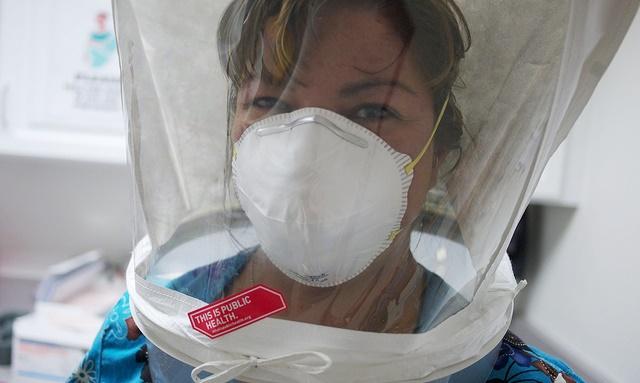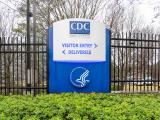Researchers who carefully analyzed existing studies on respiratory protection for healthcare workers found laboratory evidence that N95 respirators block infectious particles better than surgical masks do, but they concluded that clinical studies have shown no significant advantage for respirators in real life.
The six clinical studies included in the analysis all suggested that respirators may have offered slightly better protection against acute respiratory infections, but the difference was not statistically significant in any of them, according to the report, published yesterday in the Canadian Medical Association Journal (CMAJ).
"Our meta-analysis showed that there were insufficient data to determine definitively whether N95 respirators are superior to surgical masks in protecting healthcare workers against transmissible acute respiratory infections in clinical settings," the report states.
The study was conducted by a team from Public Health Ontario and the University of Toronto, with Jeffrey D. Smith, MSc, of Public Health Ontario as first author. The team calls for more randomized controlled trials (RCTs) on the issue, which they say are needed to assess the influence of human behavior on the effectiveness of respiratory protection.
Another respiratory protection expert, who was not involved in the study, contended that the authors don't acknowledge how difficult it is to conduct RCTs on this topic. The expert also took issue with the authors for belittling the significance of the experimental studies.
A persistent debate
The comparative effectiveness of respirators and masks has long been debated. N95 respirators are designed to fit closely to the face and filter out at least 95% of airborne particles, whereas surgical masks fit more loosely and were originally designed to prevent the wearer from infecting others.
Health workers say the tight-fitting N95s are uncomfortable and difficult to wear for long periods. Surgical masks are more comfortable and cheaper, but scientists have not found much evidence that they protect wearers from respiratory pathogens.
Given the incomplete evidence, official guidelines on respiratory protection for healthcare workers don't all agree. For example, recommendations from the World Health Organization and the US Centers for Disease Control and Prevention (CDC) differ on protection against pandemic influenza and SARS (severe acute respiratory syndrome), according to a 2013 study. Also, guidelines vary from country to country, that study showed.
A quarter-century of studies
The Canadian researchers searched the medical literature for clinical and lab studies published from 1990 through 2014 that compared N95s and surgical masks. They found 23 lab studies but only 6 clinical studies that met their criteria, including 3 RCTs, 1 cohort study, and 2 case-control studies.
The lab studies were not included in the meta-analysis but were examined to provide an overview of the experimental evidence in favor of N95 respirators. These "surrogate exposure" studies involved mannequins exposed to artificially produced aerosols.
In the clinical studies, the main outcome of interest was lab-confirmed respiratory infection, including infections diagnosed by serology, polymerase chain reaction, and viral culture. Secondary outcomes were influenza-like illness (ILI) and work absenteeism due to hospital-acquired respiratory infections.
The clinical studies all indicated that N95s conferred slightly or somewhat lower odds of contracting an infection, but because of wide confidence intervals (CIs), the differences weren't significant.
For lab-confirmed respiratory infections, the odds ratio (OR) for N95s in the RCTs was 0.89 (95% CI, 0.64-1.24). In the cohort study the OR was 0.43 (95% CI, 0.03-6.41), and in the case-control studies it was 0.91 (95% CI, 0.25-3.36).
ILI was included as an outcome in the three randomized trials. The authors put the OR for N95s in those studies at 0.51 (95% CI, 0.19-1.41). The one RCT that assessed workplace absenteeism yielded an OR of 0.92 (95% CI, 0.57-1.50).
The authors conclude that the lack of significant differences between the two forms of protection and the wide confidence intervals "must be interpreted as insufficient evidence to determine whether there is a clinically significant difference."
Lab study findings
As for the lab studies, the authors found that N95s generally allowed less particle penetration of filters and less face-seal leakage and overall leakage than surgical masks did, suggesting that the respirators are superior.
However, they caution that the transmission of respiratory infections is a complex process that may not be "appropriately replicated" by lab studies. "N95 respirators are often considered uncomfortable for regular use, and improper wearing or adjustment of the respirator because of discomfort could lead to face contamination, thus negating the potential protective benefit," the report says.
The researchers cite several limitations of their study. For two examples, only one of the clinical studies included independent monitoring of health workers' actual use of masks or respirators, and other infection control precaution such as hand hygiene may have confounded results. They also observe that health workers could have acquired respiratory infections in the community rather than on the job. In addition, there was inevitable bias in that workers could not be blinded to the type of face protection they were using.
The team concludes that additional "large RCTs are needed to detect a potentially clinically important difference," given that respiratory infection rates in health workers are low.
A critique from an outside expert
A respiratory protection expert who was not involved in the study, Lisa Brosseau, ScD, voiced some criticisms of the meta-analysis. She is a professor in the Division of Environmental and Occupational Health at the University of Illinois School of Public Health in Chicago.
"I think Smith et al fail to recognize or discuss how difficult it is to conduct a clinical trial comparing respirators and surgical masks for the protection of healthcare workers from infectious disease in the US or Canada (or Europe, for that matter)," she told CIDRAP News via e-mail. "The only successful studies have been conducted by Raina MacIntyre in China, where there is a tradition and culture that supports the wearing of 'facemasks' for the full work period."
Brosseau said Smith and colleagues commented that the only clinical study in which researchers monitored the wearing of respirators and masks was the 2009 one led by Mark Loeb, MD, MSc, of McMaster University. But she said that monitoring was very limited and involved only a few healthcare workers, adding, "It is very unlikely that any of the participants in the Loeb study was wearing either a surgical mask or respirator for all of their exposures, because that is not a cultural or organizational expectation in Canadian hospitals."
Although MacIntyre didn't monitor wear in her studies, Brosseau added, "It is very likely that most of the participants wore their mask or respirator almost all of the time, because that is the cultural and organizational expectation in China."
Brosseau also criticized the authors for their interpretation of the experimental data indicating the advantages of N95s: "I think it is irresponsible for Smith et al to conclude that the experimental data clearly support the use of a respirator over a surgical mask for healthcare worker protection, but to then conclude that only clinical data should be used to make this decision in the 'real world.' Their arguments for this reasoning are very weak, draw on data and reasoning not relevant to the issue, and reflect a strong bias."
Senior author responds
The senior author of the meta-analysis, Gary E. Garber, MD, chief of infection prevention and control at Public Health Ontario, countered that the study covered only acute respiratory infections spread mainly by contact and droplets, not those classified as having airborne transmission, such as tuberculosis, or those transmitted through aerosol-generating procedures such as bronchoscopy.
The rationale for using N95s for the latter indications is better, though still not clinically proved, he said.
He also commented that respiratory protection is only one of a whole set of recommended infection control precautions, including other protective garb, hand hygiene, identification and isolation of patients, and proper air exchange.
"Our key point really does go to exactly the point about experiment design, which really is that N95 are difficult to wear and that people consistently underestimate the importance of the other infection control and procedures," he said. "It doesn't matter what facial protection you wear, if you're taking it off without clean hands and then touching your face. Focusing on only one aspect of a bundle of infection control policies and procedures would not be adequate."
Garber added that N95s must be properly worn and fit-tested to be efficient. "If you don't do that, you are deluding yourself that you have increased protection. Then you may not put the effort into the other infection control elements."
As for the relevance of the experimental data, he said the lab findings "seem to show potential for N95s providing additional protection, and that's why we didn't just focus on the clinical aspects. But what we all know is that just because something shows better potential in the lab in a controlled situation, doesn't mean that when you use it in the real world that benefit is there."
Smith JD, MacDougall CC, Johnstone J. Effectiveness of N95 respirators versus surgical masks in protecting health care workers from acute respiratory infection: a systematic review and meta-analysis. CMAJ 2016 (published online Mar 7) [Abstract] [Full text]
See also:
Mar 7 CMAJ press release
2013 BMC Research Notes report about varying guidelines for respiratory protection for healthcare workers
Oct 2, 2009, CIDRAP News story on Loeb trial of respirators versus masks





















